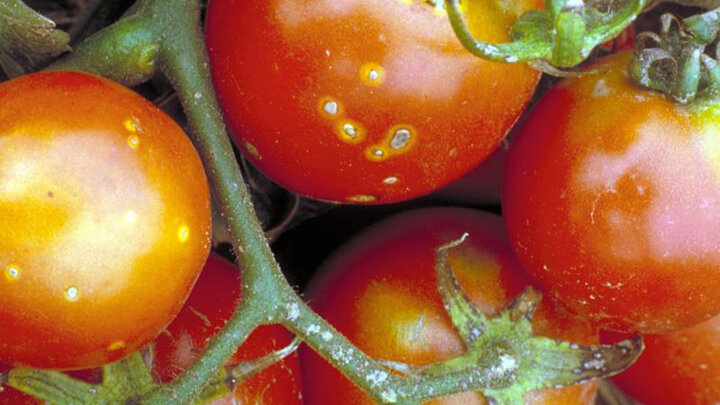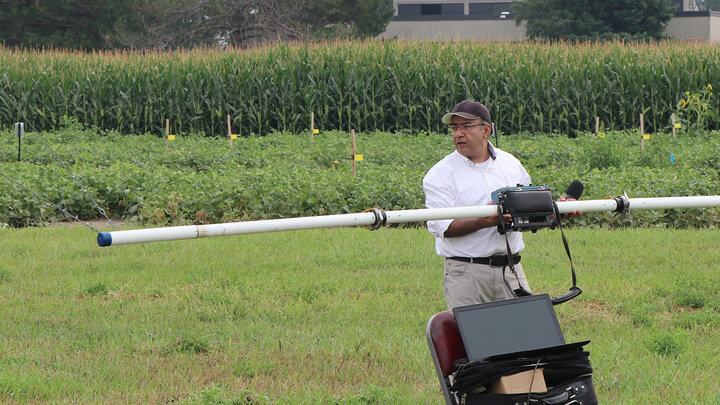Out in your garden, you may see your plants growing and even flowering, but you may not notice if they are diseased. Plant diseases are any abnormal condition or disorder that alters the appearance or function of a plant. These disorders are typically triggered by pathogens, or organisms that invade plant tissues and interfere with growth, nutrient transport, or reproduction. The four primary groups of plant pathogens include fungi, bacteria, viruses, and nematodes. Understanding the nature of each pathogen type is crucial for early diagnosis, effective treatment, and long-term management of garden health.
Let’s look at bacterial plant pathogens first. These are microscopic organisms that invade plants through natural openings stomata, hydathodes, nectaries, lenticels, or wounds. Once inside, they multiply rapidly, producing enzymes and toxins that degrade plant tissues and disrupt cellular function. Most plant-pathogenic bacteria are rod-shaped and spread through water, soil, or contaminated tools. Symptoms often include wilting, oozing, leaf spots, soft rots, and vascular discoloration.
Common examples include:
• Pseudomonas syringae (leaf spot and blight)
• Xanthomonas campestris (black rot in crucifers)
• Erwinia amy/ovora (fire blight of apples and pears)
• Clavibacter michiganensis (bacterial canker of tomato)
Sanitation, resistant varieties, and proper irrigation practices help minimize spread. Bacteria are particularly difficult to control once established. An ounce of prevention is worth a pound of cure.
Next, we have fungi. They are among the most common and destructive plant pathogens. They reproduce through spores and can infect plants via direct penetration or through natural openings. Fungal pathogens thrive in warm, moist environments and may persist in soil, plant debris, or on tools. Once inside, they disrupt normal plant processes by producing enzymes, toxins, or by physically clogging vascular tissue. Symptoms include leaf spots, wilts, blights, rots, and rusts.
Common examples include:
• Botrytis cinerea (gray mold)
• Colletotrichum spp. (anthracnose)
• Fusarium oxysporum (Fusarium wilt)
• Puccinia spp. (rusts)
• Alternaria solani ( early blight)
Management involves using resistant varieties, crop rotation, fungicides, good airflow, and removal of infected debris. Fungal infections often flourish under poor drainage and overcrowded conditions.
Nematodes are the most abundant multicellular organisms on Earth. There are beneficial nematodes and plant-parasitic nematodes. The latter are microscopic roundworms that feed on roots, stems, or leaves. Unlike beneficial soil nematodes, these species weaken plants by damaging root systems, disrupting nutrient uptake, and opening pathways for secondary infections. Symptoms include stunted growth, yellowing, root galls, and reduced yields. These pests are especially problematic in sandy soils and can persist for years.
Common plant-pathogenic nematodes include:
• Meloidogyne spp. (root-knot nematodes)
• Heterodera spp. (cyst nematodes)
• Pratylenchus spp. (lesion nematodes)
• Rotylenchulus reniformis (reniform nematode)
Management includes using resistant cultivars, solarization, anaerobic solarization, crop rotation with non-host plants, and organic soil amendments that support antagonistic microbes. Nematodes often go undetected until serious damage has occurred. Soil testing is advised.
Finally, there are the Plant viruses, which are infectious agents composed of RNA or DNA encased in a protein coat. Unlike bacteria or fungi, viruses cannot reproduce without a host. They depend on their host cell's protein synthesis pathways to reproduce. Viral infections can cause a range of symptoms, including mosaic patterns on leaves, leaf curling, yellowing, stunted growth, and distorted fruit. Most plant viruses are spread by insect vectors such as aphids, thrips, or whiteflies, or through infected seed or grafting.
Common plant viruses include:
• Tobacco mosaic virus (TMV)
• Tomato spotted wilt virus (TSWV)
• Cucumber mosaic virus (CMV)
• Potato virus Y (PVY)
There are no cures for viral diseases. Management relies on vector control, the removal of infected plants, and using certified virus-free seeds or stock.




